#Cretaceous fossil tooth
Explore tagged Tumblr posts
Photo

RARE: Ptychodus decurrens Fossil Shark Tooth – Shell-Crushing Species, Cenomanian Chalk, Cretaceous, Dorset UK
Presenting a RARE fossil tooth from the shell-crushing shark Ptychodus decurrens, discovered in the Cenomanian Chalk of the Cretaceous period at White Nothe, Ringstead Bay, Dorset, UK. This species of shark is renowned for its broad, flat crushing teeth, used for feeding on molluscs and other hard-shelled marine prey.
Species: Ptychodus decurrens
Order: Hybodontiformes
Family: Ptychodontidae
Geological Unit: Cenomanian Chalk Formation
Geological Period: Late Cretaceous
Stage: Cenomanian
Depositional Environment: Shallow marine shelf – warm epicontinental sea
Notable Features: Broad, ridged occlusal surface typical of shell-crushing function
Rarity: High – rarely found in such well-preserved condition in the UK
This specimen is a genuine and rare example of a shark tooth from a unique Cretaceous fauna. Ptychodus sharks were large and slow-moving, adapted for crushing invertebrate prey – a fascinating adaptation among prehistoric sharks.
The exact fossil you see in the photos is the one you will receive. This tooth was personally discovered by our field experts Alister and Alison on 16 January 2025, and carefully cleaned and preserved by Alison herself to ensure clarity and long-term integrity.
Scale cube = 1cm – please refer to photo for exact dimensions.
All of our Fossils are 100% Genuine Specimens & come with a Certificate of Authenticity.
A rare and scientifically interesting collector’s item, perfect for enthusiasts of marine reptiles, sharks, and Cretaceous paleontology.
#Ptychodus decurrens#fossil shark tooth#Cretaceous fossil tooth#Cenomanian Chalk fossil#shell crusher shark#White Nothe fossil#Ringstead Bay fossil#Dorset fossil shark#UK marine fossil#genuine fossil with certificate#rare shark fossil#prehistoric shark tooth
0 notes
Text

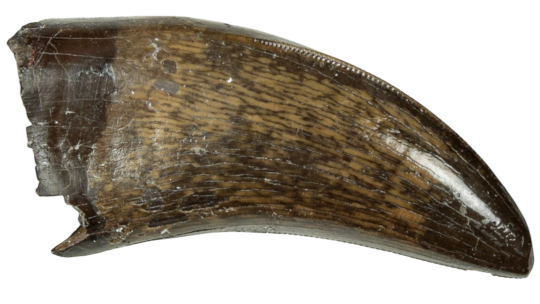
Serrated, 1.41" Tyrannosaur (Nanotyrannus?) Tooth - South Dakota
#cretaceous#south dakota#fossil tooth#tyrannosaur#tooth#teeth#teeth fossil#fossil#fossils#png#transparent#paleontology#tooth fossil#fossil teeth
37 notes
·
View notes
Text
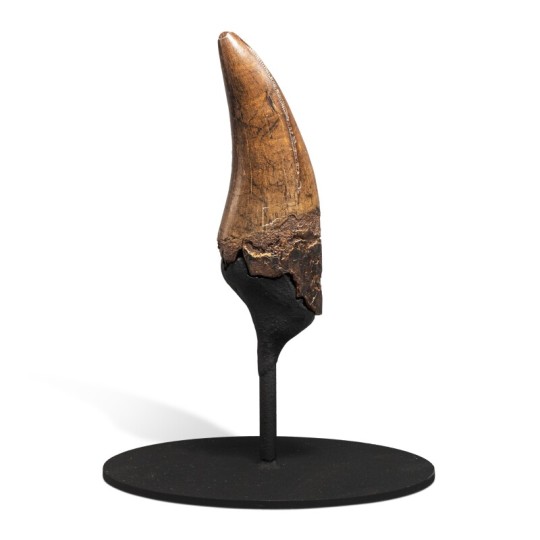
Tyrannosaurus Rex Tooth Late Cretaceous Period (approx. 67 million years ago) Lance Formation, Niobrara County, Wyoming, USA
A LARGE AND WELL-PRESERVED TOOTH FROM THE MOST FEARSOME PREDATOR EVER TO WALK THE EARTH
No animal elicits the combination of fascination, reverence, and fear quite like that of Tyrannosaurus rex, the "tyrant lizard king." Dominating the western landscape of Late Cretaceous North America, T. rex's five-foot-long skull was packed with 60 teeth and featured a bone-crushing bite force of nearly 13,000 pounds (5,900 kg) per square inch, the strongest of any terrestrial animal other than its ancestor, Gorgosaurus. In comparison to other carnivorous theropods, T. rex teeth are proportionately huge. Robust and thickly-enameled crowns strengthened dozens of teeth, with serrations on both the posterior and anterior edges. The almost unrivaled power of this 40-foot-long (12.2 m) apex predator allowed it to hunt virtually every large dinosaur in its environment, including Triceratops, Ankylosaurus, Ornithomimus, Pachycephalosaurus, Edmontosaurus, and even other tyrannosaurs.
#Tyrannosaurus Rex Tooth#Late Cretaceous Period#Lance Formation#Wyoming#fossil#dinosaur#paleontology#paleontologists#archeology#archeolgst#history#history news#ancient history
67 notes
·
View notes
Text

The Smilodon truly are the perfect cats for people who are non cat lovers!😄
🦴🇧🇷
#history#smilodon#jurassic world#jw#saber tooth tiger#fossils#prehistoric#extinct animals#paleontology#peter wilhelm lund#hygenodon#brasil#minas gerais#brazil#machairodontinae#extinct#cats#animals#jurassic world camp cretaceous#brazilian history#prehistoric animals#zoo tycoon 2#prehistoric park#zt2#prehistoric kingdom#1800s#nickys facts
3 notes
·
View notes
Text

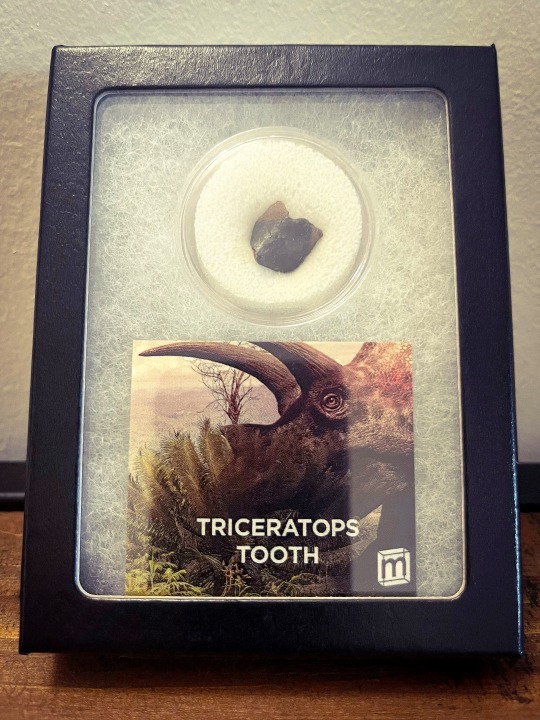
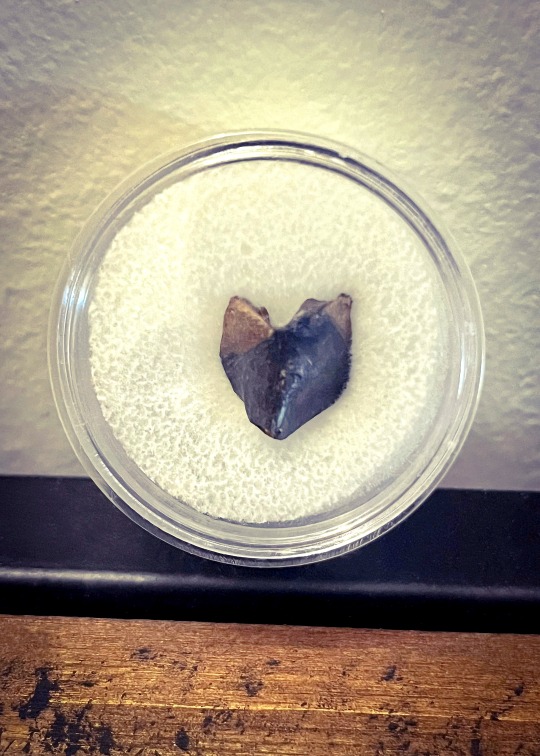
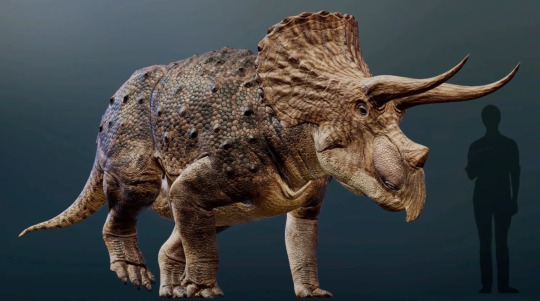

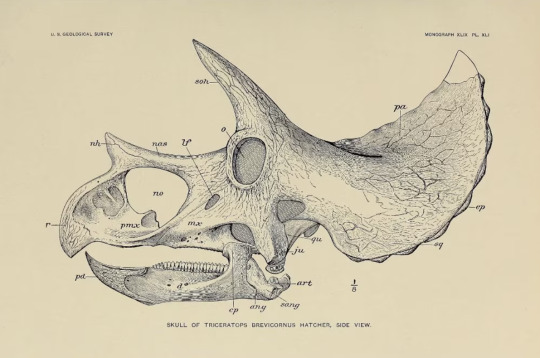
Just added another super cool fossil to the collection! This genuine Triceratops tooth was found in the Lance (Creek) Formation in Wyoming and dates to roughly 66 million years old! 🦷
Triceratops was one of the last dinosaurs to evolve, sporting bony frills and prominent horns and appearing at the very end of the Cretaceous. Their jaws came together to form a sharp curved beak – a feature that was built not for biting, but for grasping and pulling at plants. Behind this beak sat the dinosaur’s teeth, which were arranged in a tight structure called a dental battery. This positioning of one tooth nestled inside of another allowed them to constantly renew teeth that were damaged in the wear and tear of crushing plant fibers. Triceratops was a top herbivore for nearly 3 million years, thriving until the Chicxulub asteroid wiped out the dinosaurs during the massive KT extinction event. 💥🌊
#dino#dinos#dinosaur#dinosaurs#triceratops#tooth#fossil#fossils#paleontology#when dinosaurs ruled the earth#collecting#collectibles#collection#collector#prehistoric#mini museum#triceratops horridus#cretaceous period#late cretaceous#cretaceous#dental
1 note
·
View note
Text
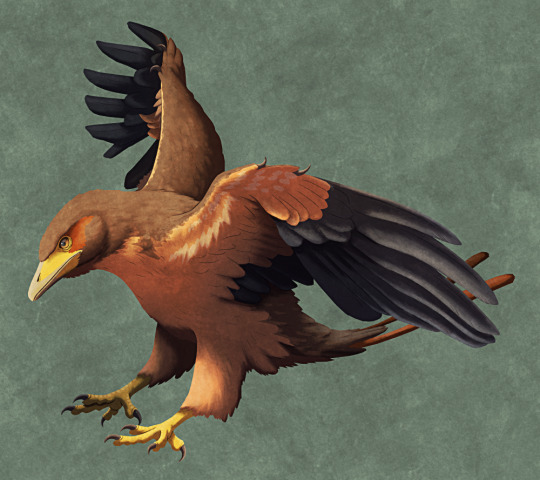
Avisaurus darwini here lived at the very end of the Cretaceous, about 66 million years ago, in what is now the Hell Creek fossil beds in Montana, USA.
It was a member of a diverse group of Mesozoic birds known as enantiornitheans, which retained claws on their wings and often still had toothed snouts instead of beaks – and being part of the avisaurid family it was also one of the larger known examples of these birds, similar in size to a modern hawk at around 60cm long (~2').
Although this species is only known from isolated foot bones, the remains have distinct enough anatomical features to show that Avisaurus had powerful gripping talons similar to those of modern hawks and owls, suggesting it had a similar lifestyle hunting small vertebrate prey in the ancient swampy Hell Creek ecosystem.
———
NixIllustration.com | Tumblr | Patreon
References:
Clark, Alexander D., et al. "New enantiornithine diversity in the Hell Creek Formation and the functional morphology of the avisaurid tarsometatarsus." PloS one 19.10 (2024): e0310686. https://doi.org/10.1371/journal.pone.0310686
“Predatory birds from the same fossil formation as SUE the T. rex.” Field Museum, https://www.fieldmuseum.org/about/press/predatory-birds-from-the-same-fossil-formation-as-sue-the-t-rex
Wikipedia contributors. “Avisauridae” Wikipedia, 21 Oct. 2024, https://en.wikipedia.org/wiki/Avisauridae
Wikipedia contributors. “Avisaurus” Wikipedia, 09 Nov. 2024, https://en.wikipedia.org/wiki/Avisaurus
#science illustration#paleontology#paleoart#palaeoblr#avisaurus#avisauridae#enantiornithes#avialae#bird#dinosaur#art
707 notes
·
View notes
Text
Today Marks 200 Years of Dinosaurs!!
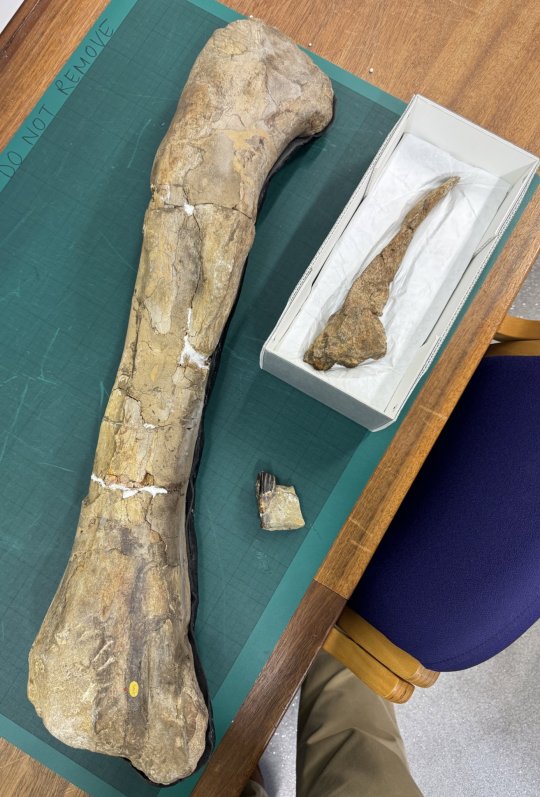
Photo by Paul Barrett (image link here).
On this day, February 20th, 1824, bones from the Stonesfield Slate in Oxfordshire, England were described by William Buckland. Dinosaur fossils have likely been known since time immemorial, but that day was the first time a dinosaur had been described by western science (being the predatory Megalosaurus). Two decades later, Richard Owen would use the three fossils shown above - belonging to three separate animals Megalosaurus (leg), Iguanodon (tooth), and Hylaeosaurus (spine) - to formally recognize Dinosauria as a lineage of animals. Today over a thousand Mesozoic dinosaur genera are known, with many being described on a monthly basis, and our understanding of these animals has grown tremendously since the 1820s. We now recognize that dinosaurs were sophisticated, highly active reptiles with diverse behaviors of which one lineage survived the great Cretaceous Mass Extinction Event: the birds. Paleontologist Darren Naish has said that dinosaurs are popular "because they look neat, because they're awesome in every sense of the word, because they ruled a vast, chaotic, complex wilderness, and because they're the source of a myriad of big, really interesting questions". And I'm sure we all couldn't agree more.
So here's to 200 Years of Dinosaurs! How will you celebrate one of the world's most popular and incredible animals?
1K notes
·
View notes
Text

Fossil of oldest known modern bird discovered in Antarctica
A near complete skull fossil found in Antarctica has revealed the oldest known modern bird — a mallard duck-size creature related to the waterfowl that live by lakes and oceans today, a new study has found. The 68 million-year-old fossil belongs to an extinct species of bird known as Vegavis iaai that lived at the end of the Cretaceous period, when Tyrannosaurus rex dominated North America and just before a city-size asteroid hit Earth, dooming the dinosaurs to extinction. Birds that lived among the dinosaurs were barely recognizable when compared with today’s bird species. Many sported bizarre features such as toothed beaks and long, bony tails. Vegavis, however, would have been ducklike in size and similar ecologically to aquatic bird species such as loons, according to the lead author of the study published in the journal Nature...
Read more: https://cnn.it/4htfpo6
306 notes
·
View notes
Text
Round 3 - Chondrichthyes - Chimaeriformes




(Sources - 1, 2, 3, 4)
Our last order in Chondrichthyes is Chimaeriformes, commonly known as “Chimaeras”, and informally known as “ghost sharks”, “spookfish”, “rabbitfish”, or “rat fish” (not to be confused with the Actinopterygiian “rattails”.) Historically a much more diverse and abundant group, they now only comprise the living families Callorhinchidae (“plough-nosed chimaeras” or “elephantfish”), Chimaeridae (“short-nosed chimaeras”), and Rhinochimaeridae (“long-nosed chimaeras”).
Chimaeras are soft-bodied, with bulky heads and long, tapered tails. Their pectoral fins are large enough to generate lift at a relaxed forward momentum, similar to a kite, giving the chimaera the appearance of "flying" through the water. Their gill arches are condensed into a pouch-like bundle covered by an operculum with a single gill-opening in front of the pectoral fins, similar in appearance to Actinopterygiians. They lack spiracles. There are two dorsal fins: a large triangular first dorsal fin and a low rectangular or depressed second dorsal fin. For defense, some chimaeras have a venomous spine on the front edge of the dorsal fin. In many species, the bulbous snout is modified into an elongated sensory organ, capable of electroreception to find prey. Instead of many sharp, consistently-replaced teeth, chimaeras have just six large, permanent tooth-plates, which grow continuously throughout their entire life. These tooth-plates are arranged in three pairs, with one pair at the tip of the lower jaws and two pairs along the upper jaws. They together form a protruding, beak-like crushing and grinding mechanism, comparable to the incisor teeth of rodents and lagomorphs. Most living species are native to the deep sea, with some species inhabiting depths exceeding 2,000 m (6,600 ft) deep, though the few exceptions include the shallower-dwelling plough-nosed chimaeras (genus Callorhinchus) (image 2), the Rabbit Fish (Chimaera monstrosa), and the Spotted Ratfish (Hydrolagus colliei) (image 3).
Chimaeras have separate anal and urogenital openings, rather than a single cloaca. Like sharks and rays, male chimaeras utilize claspers for internal fertilization of females, but unlike sharks and rays, also have retractable sexual appendages known as tentacula to assist in mating. The frontal tentaculum, a bulbous rod which extends out of the forehead, is used to clutch the females' pectoral fins during mating. The prepelvic tentacula are serrated hooked plates normally hidden in pouches in front of the pelvic fins, and they anchor the male to the female. Their claspers are fused together by a cartilaginous sheathe before splitting into a pair of flattened lobes at their tip. Females lay their eggs within spindle-shaped, leathery egg cases which they deposit on the sea floor.
As the most ancient of the Chondrichthyans, Chimaeriformes are truly deserving of the moniker “living fossil”. They have been around since the Early Carboniferous, with the earliest known fossil species being Protochimaera, and split off from the sharks and rays during the Devonian. Modern chimaeras are known from the Early Jurassic, but fossil egg cases from the Late Triassic resembling those of rhinochimaerids and callorhinchids indicate that they had a global distribution earlier than this. Modern chimaeras reached their highest ecological diversity during the Middle Cretaceous. Recent studies indicate that chimaeras were likely a shallow-water group for most of their existence, and only fled to deeper waters in the aftermath of the K-Pg extinction event, adapting to the deep sea to survive.

Propaganda under the cut:
Some chimaera venom can cause pain, necrosis, hallucinations, and localized paralysis in humans. It is not deadly to humans, but has been known to kill Harbor Seals that injested Spotted Ratfish (Hydrolagus colliei).
Spotted Ratfish (Hydrolagus colliei) have large, emerald green eyes, which are able to reflect light, similar to the eyes of a cat.
Chimaera teeth are unique among vertebrates, due to their mode of mineralization. Most of each plate is formed by relatively soft osteodentin, but the active edges are supplemented by a unique hypermineralized tissue called pleromin, rather than enamel. Pleromin is an extremely hard enamel-like tissue, arranged into sheets or beaded rods, but it is deposited by mesenchyme-derived cells similar to those that form bone. In addition, pleromin's hardness is due to the mineral whitlockite, which crystalizes within the teeth as the animal matures.
The Australian Ghostshark (Callorhinchus milii) is very popular with fish-and-chips restaurants in New Zealand and is sold as 'flake' or 'whitefish' in Australia.
The Striped Rabbitfish (Hydrolagus matallanasi) can see in total darkness and sense electromagnetic radiation (outside of the visible spectrum) emitted by other marine creatures due to exposed nerves on the sides of its body.
Some species of chimaerids are known to segregate by sex, with females congregating at greater depths than males.
Despite their deep sea habitat and reclusive nature, some chimaera species are still threatened by bycatch due to deep sea trawling for demersal shrimp and prawns. Even when released, most chimaeras do not survive the process of being quickly pulled up from the pressurized deep sea to shallower water.
#description a bit longer than usual because they’re so unlike all the other members of the class#animal polls#round 3#chondrichthyes
102 notes
·
View notes
Text
Daily fish fact #792
Palauan primitive cave eel!

This eel species was discovered in a single cave in a single reef off the coast of Palau in 2009. This single species is a sister group to all other extant eels, having diverged from all others 200 million years ago! It retains several primitive features like a retained pseudobranch (the very first reduced gill arch), certain jaw bones, distinct caudal fin rays and toothed gill rakers, some features being even more primitive than those found in eel fossils from the Cretaceous!
#fish#fish facts#fishfact#fishblr#marine biology#marine animals#marine life#sea animals#sea creatures#sea life#zoology#biology#eel#eels#palauan primitive cave eel
225 notes
·
View notes
Text
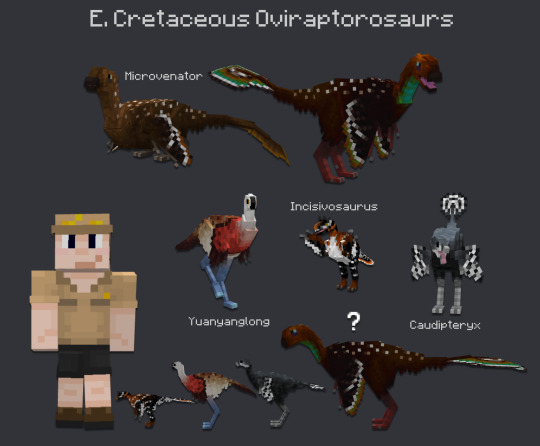
Though the majority of oviraptorosaur diversity existed later in the Cretaceous, several more primitive genera are known from the Early Cretaceous. I have created four to join our roster for this epoch, illustrating the morphological diversity of these initial forms.
An iconic dinosaur, well-known for its cartoonish front teeth, Incisivosaurus bears little resemblance to later oviraptorosaurs. The skull is elongate, crestless, and evidently toothed, in contrast to the more typical members of this clade. Incisivosaurus is among the most basal oviraptorosaurs and was important in illustrating that many of the group’s most bird-like features were the result of convergence. This animal was quite small and is known from a single 10 cm skull along with two referred juvenile specimens. It was likely a close relative of Protarchaeopteryx, with some researchers suggesting synonymy between the two genera. However, due to the crushed nature of the Protarchaeopteryx skull and the lack of an adult postcranial skeleton of Incisivosaurus, comparison remains difficult. Incisivosaurus possessed feathers, with the juvenile specimens exhibiting large tail fans similar to those known from its more derived relative, Caudipteryx.
Caudipteryx is another small oviraptorosaur, best known for its immaculate preservation which helped to establish the presence of feathers in non-avian dinosaurs. Fossilized melanosomes suggest that Caudipteryx was a dark colored animal with striping in the wings and tail fan. It bears more resemblance to later, more derived Oviraptorosaurs than to Incisivosaurus, with reduced teeth, a shortened skull, and more bird-like proportions. However, these dinosaurs were contemporaries and were both discovered in China’s Yixian Formation.
Yuanyanglong is a newly described dinosaur published in 2024. It had a comically small head and long legs. Ecologically, it may have been a wader. Two specimens are known, having been unearthed from the Miaogou Formation of northern China. While many Late Cretaceous oviraptorosaurs are described from localities in the Gobi desert, this is the first known from the Early Cretaceous in that region. The species name “bainian” means "a hundred years,” and honors the 100th anniversary of the naming of Chirostenotes and Oviraptor, both described in 1924.
Finally, Microvenator is a quite speculative inclusion. Known from only a single juvenile specimen, the identity of this animal remains uncertain. It was initially interpreted as a small predatory dinosaur, with Deinonychus teeth being attributed to it. Later study established that it was, in fact, an oviraptorosaur, the oldest known from North America. However, whether it is a primitive oviraptorosaur along the lines of Incisivosaurus, or a more derived oviraptorosaur remains uncertain. Recent phylogenies tend to find that it is the most basal Caenagnathid, meaning that it is more closely related to Anzu than to Oviraptor, and as such, quite derived. Thus, the appearance, as interpreted here, is more like the oviraptorosaurs of the Late Cretaceous than the more basal relatives otherwise known from the Early Cretaceous.
60 notes
·
View notes
Photo

7.5" Genuine Spinosaurus Dinosaur Tooth Fossil, Kem Kem Beds, Cretaceous Morocco | Huge Authentic Specimen + COA
7.5" Genuine Spinosaurus Dinosaur Tooth Fossil – Kem Kem Beds, Tegana Formation, Aptian Stage, Cretaceous: Kem Kem Basin, Morocco
An extraordinary and museum-grade fossil, this 7.5-inch Spinosaurus tooth is among the largest and most display-worthy dinosaur teeth found in the fossil record. It comes from Spinosaurus aegyptiacus, a giant sail-backed predator and one of the largest known theropod dinosaurs. This specimen originates from the Kem Kem Beds of the Tegana Formation, located within the Kem Kem Basin, southeastern Morocco, and dates to the Aptian stage of the Early Cretaceous, approximately 113–100 million years ago.
Fossil Type & Species:
Type: Vertebrate Fossil (Tooth – Crown Specimen)
Species: Spinosaurus aegyptiacus
Order: Theropoda
Superfamily: Megalosauroidea
Family: Spinosauridae
Formally Described By: Ernst Stromer, German palaeontologist, in 1915
Geological Details:
Formation: Tegana Formation
Beds: Kem Kem Beds
Geological Stage: Aptian (Early Cretaceous)
Age: ~113–100 million years ago
Biozone: Kem Kem Compound Assemblage Zone
Depositional Environment: Fluvial-deltaic environment of rivers, lakes, and floodplains. This dynamic ecosystem was home to a rich diversity of aquatic and terrestrial life and preserved fossils within fine, iron-rich sediments.
Morphology & Features: This stunning fossil tooth displays hallmark features of Spinosaurid anatomy:
Conical and slightly flattened profile for grasping slippery aquatic prey
Smooth enamel surface with longitudinal ridges, lacking serrations — unique to Spinosaurus
Coloration includes rich fossil browns, ochres, and reddish mineralisation
Excellent crown integrity with a natural tapering point and stable fossilised surface
Notable: Teeth over 7 inches from Spinosaurus aegyptiacus are exceptionally rare and command significant interest from museums and serious collectors. As a semi-aquatic predator with adaptations for both land and water, Spinosaurus was unlike any other dinosaur, and its teeth reflect its specialised piscivorous (fish-eating) diet.
Specimen Details:
Origin: Kem Kem Basin, near Taouz, Morocco
Formation: Tegana Formation, Kem Kem Beds
Species: Spinosaurus aegyptiacus
Fossil Type: Isolated Tooth (Crown)
Length: Approx. 7.5 inches
Size Reference: Scale rule square = 1cm (please refer to photo for full sizing)
Note: You will receive the exact specimen shown in the photographs
Authenticity & Quality: All our fossils are hand-selected for their quality and scientific value. This item is 100% genuine and includes a Certificate of Authenticity. It has not been restored, enhanced, or artificially altered.
Why Choose This Fossil? This rare 7.5" Spinosaurus tooth is a high-end collector's item perfect for:
Museum-quality displays
Advanced palaeontology collections
Educational institutions
Investment-grade fossil acquisitions
Shipping & Packaging: Professionally packed using secure and eco-conscious materials. Fast dispatch and careful handling ensure your specimen arrives safely and in pristine condition.
Bring prehistoric grandeur into your collection with this impressive 7.5-inch Spinosaurus dinosaur tooth fossil — a remarkable relic from Earth’s distant past.
All of our Fossils are 100% Genuine Specimens & come with a Certificate of Authenticity.
#Spinosaurus tooth fossil#7.5 inch dinosaur tooth#massive dinosaur fossil#genuine Spinosaurus aegyptiacus tooth#Kem Kem Beds Morocco#Cretaceous fossil tooth#Aptian dinosaur fossil#Tegana Formation fossil#rare dinosaur fossil#fossil with COA#large theropod tooth#carnivorous dinosaur fossil#authentic fossil tooth#museum grade dinosaur fossil#collector fossil specimen
0 notes
Text
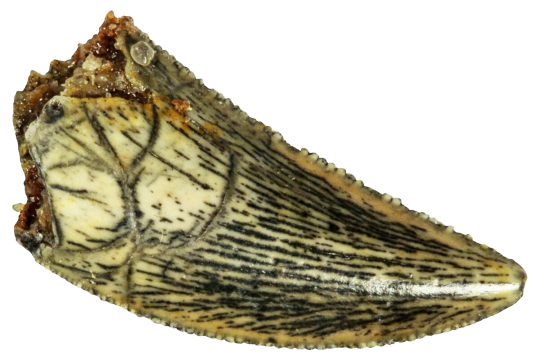

Serrated, .77" Raptor Tooth
#cretaceous#raptor#raptor tooth#dinosaur#dinosaur fossil#dinosaur tooth#teeth#tooth#teeth fossil#fossilized tooth#fossilized#png#transparent#paleontology#paleoblr#prehistoric#fav
28 notes
·
View notes
Text

Dinovember 2024 Day 5: Hadrosaurus foulkii
This species, which measured 7-8 meters long, weighed about 2-4 tons, and lived about 80.5-78.5 million years ago on a coastal floodplain in what is now the Woodbury Formation of New Jersey, was in 1858 the first dinosaur ever to be described in the United States and North America from good fossil remains. Ten years later the only known specimen of Hadrosaurus foulkii became the first skeleton of a dinosaur ever to be mounted and put on display at a public institution-the Philadelphia Academy of Natural Sciences-by the renowned English naturalist-sculptor Benjamin Waterhouse Hawkins, who is also famous for designing the sculptures of dinosaurs and other prehistoric animals on the grounds of London’s Crystal Palace.
Hadrosaurus lends its name to the Hadrosauridae, the large, battery-toothed, herd-dwelling and hoof-toed ornithopods that dominated Laurasia and even Patagonia throughout the Late Cretaceous, and it was also part of a fauna of unique hadrosaurids that lived on the eastern Island continent of Appalachia. These included the 3-meter-long Claosaurus from the Niobrara Formation of Kansas, the basal Eotrachodon and the 4.5-meter-long Lophorothon atopus from the Moorevile Chalk Formation of Alabama, and the truly gigantic 10 to 17-meter-long Hypsibelma.
#paleoart#dinosaur#dinosaurs#paleontology#dinovember 2024#draw dinovember#dinovember#hadrosaurus#hadrosaurs#hadrosaur
76 notes
·
View notes
Text
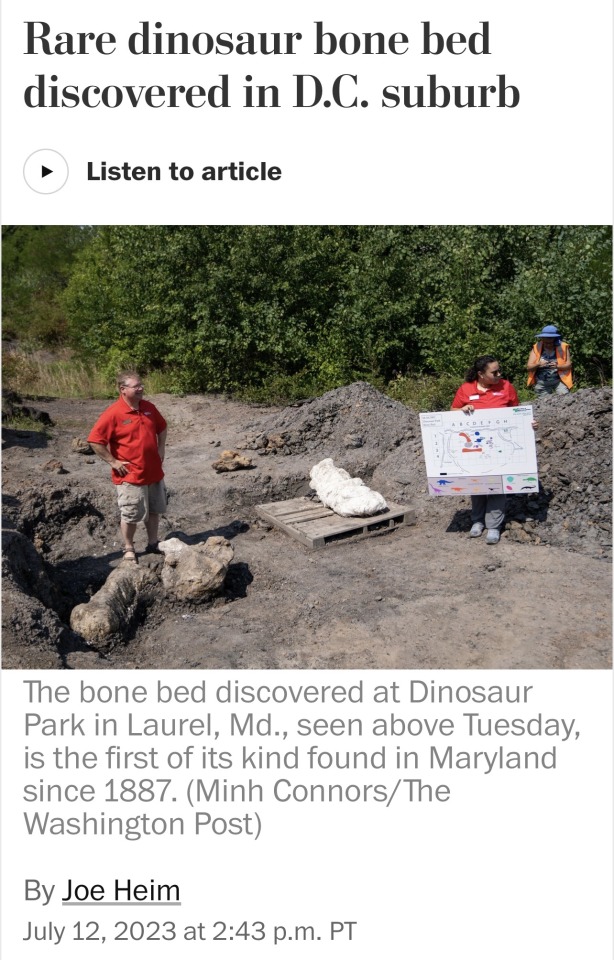
“…at a news conference at the Prince George’s County park Wednesday, officials and paleontologists announced the April discovery of the largest theropod fossil in eastern North America, a three-foot-long shin bone they hypothesize is from Acrocanthosaurus, a spiny, sharp-toothed carnivore from the Early Cretaceous period — about 38 feet long.
The discovery of additional dinosaur fossils soon followed, a trove of prehistory wrested from ironstone and clay. More than 100 fossils, estimated to be 115 million years old, have been found so far in a dinosaur bone bed along what had once been a river. A bone bed is the term paleontologists use to describe a concentration of bones of one or more species within a geologic layer.
The finding ‘marks a fundamental, extraordinary milestone in the field of paleontology and opens a window into our ancient world and to the species that once roamed this land,’ Peter A. Shapiro, chairman of the Maryland-National Capital Park and Planning Commission, said at a news conference.”
Read more here!
#dinosaurs#dinosaur#paleontology#fossils#dinosaur park#acrocanthosaurus#Astrodon johnstoni#tyrannosaurus#science
448 notes
·
View notes
Text
Caletodraco cottardi Buffetaut et al., 2024 (new genus and species)
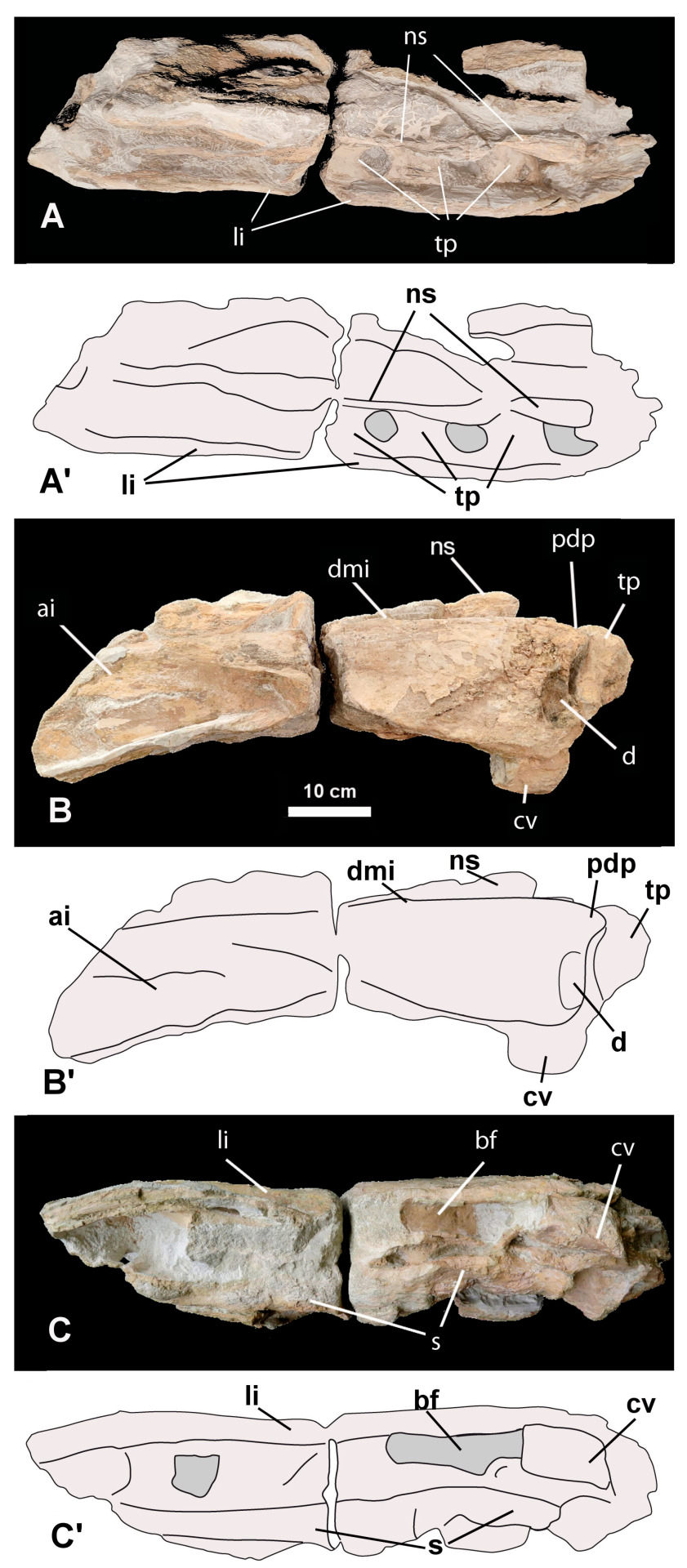
(Type specimen of Caletodraco cottardi, from Buffetaut et al., 2024)
Meaning of name: Caletodraco = Caleti [Celtic tribe that lived in what is now Normandy] dragon [in Latin]; cottardi = for Nicolas Cottard [discoverer of the original fossil]
Age: Late Cretaceous (Cenomanian)
Where found: Saint-Jouin-Bruneval, Normandy, France
How much is known: Partial skeleton of one individual including a partial hip and a tail vertebra. An isolated tooth found nearby may also belong to same individual.
Notes: Caletodraco was an abelisaurid ceratosaur, making it a close relative of genera like Carnotaurus and Aucasaurus. Most abelisaurids are known from the Southern Hemisphere, but they have also been found in Europe. Caletodraco is one of the oldest known European abelisaurids, and the first dinosaur to be reported from the marine fossil sites of the Pays de Caux region in Normandy.
Reference: Buffetaut, E., H. Tong, J. Girard, B. Hoyez, and J. Párraga. 2024. Caletodraco cottardi: a new furileusaurian abelisaurid (Dinosauria: Theropoda) from the Cenomanian Chalk of Normandy (north-western France). Fossil Studies 2: 177–195. doi: 10.3390/fossils2030009
66 notes
·
View notes